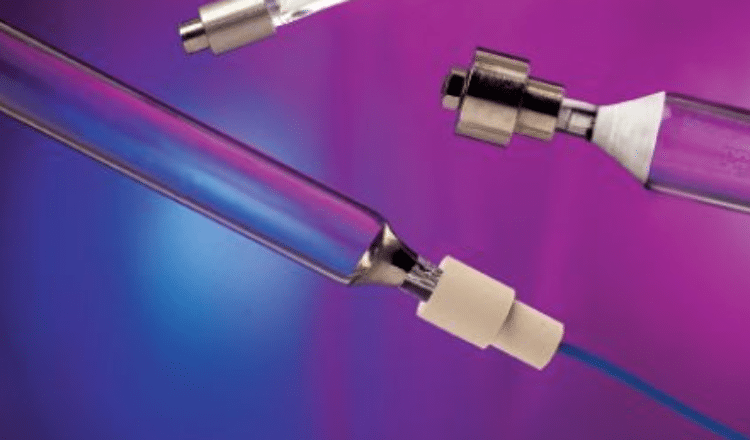The use of mercury lamps on the decrease

Laurel Brunner shares the ongoing trend of mercury lamps being less and less used across the printing industry. Governments and bodies around the world are now banning the use of mercury in products by the end of 2025.
It’s been a long time coming but the end of mercury arc lamps is definitely in sight. Mercury is a seriously nasty neurotoxin that is steadily being regulated out of products, including in the fluorescent lamps used in the printing industry for ink curing. Bodies from the US Environmental Protection Agency to the United Nations and the European Union are all banning the use of mercury in products mostly by the end of 2025.
UV curable ink chemistries have been optimised for curing using mercury arc lamps for decades, so the mercury arc lamp habit is well-entrenched in the printing business. The lamps have been the workhorses of curing applications and used in a wide range of applications for many years. But times and technologies change. The good news is that we have a solid market in LED curing lamps and inks. Printers still using technologies that use mercury should be thinking about making the leap into LED. Fluorescent lamps will be around for the next couple of years, but the printing needs to accelerate its adoption of LED based alternaties for ink curing. The end of 2025 marks the end of exemptions for the use of mercury in products such as fluorescent lamps.
Printers have a few options, such as stockpiling replacement lamps which quite a few companies are doing. But this ties up capital, distorts the market, and only defers the inevitable. Far more sensible is to make the transition now and to get used to the new reality. Fortunately LED lamps have several compelling attractions, in that they require barely any time to warm up and last far longer than fluorescent lamps. They can deliver an extremely smooth spectral curve that can be read without needing a high resolution measurement device. They also generate much less heat, so the range of substrates that can be printed is greater. And with LED lamps there is no risk of UV radiation which isn’t good for your health.
New investment carries its own risk, but when it comes to inks and curing, staying within the rules has to be a good idea. The matter of mercury arc versus LED can get complicated, so it’s also good that regulations have simplified the argument. Banning the use of mercury is in the interests of us all, so we should welcome both the rules and the development of LED based alternatives. We should probably not dwell on the fact that there is probably more mercury in your mouth (800mg per dental filling) than in the average curing lamp (10-100mg). But that’s an altogether different concern.
Source Information: This article was produced by the Verdigris Project, an industry initiative intended to raise awareness of print’s positive environmental impact. This weekly commentary helps printing companies keep up to date with environmental standards, and how environmentally friendly business management can help improve their bottom lines. Verdigris is supported by the following companies: Agfa Graphics, EFI, Fespa, Fujifilm, HP, Kodak, Miraclon, RicohSplash PR, Unity Publishing and Xeikon.
Topics
Recent news

Kodak's 2024 Sustainability Report: A Commitment to a Greener Future
Kodak's 2024 Sustainability Report, "One World, One Kodak," demonstrates a strong commitment to environmental and social responsibility. The report highlights impressive reductions in greenhouse gas emissions (56%) and water withdrawal (31%) and aims for zero waste by 2025. Notably, Kodak is pioneering double materiality assessment in the printing industry, aligning sustainability with financial reporting, and showcasing its products' environmental benefits.

How can printers lower costs on energy usage?
Clare Taylor outlines simple steps for businesses to achieve energy sustainability, focusing on cost savings and staff comfort. It emphasises starting with measuring energy consumption to identify key areas for improvement. Subsequent steps involve managing energy use through behavioral changes and low-cost interventions, like optimizing cooling settings and ensuring equipment is switched off when not needed.

The European Union's circular economy plan
Printing companies must understand the EU's Circular Economy Action Plan (CEAP), part of the European Green Deal. These initiatives drive sustainability, impacting businesses globally, even if not EU-based, through customer requirements. Printers need to be aware of reporting and sustainability expectations to manage risks and retain clients.

A revised look at sustainability in wide format print
Sustainability is crucial for wide-format print, moving beyond marketing to an imperative driven by brands and regulations. Common "eco" claims often mask complexities; true sustainability demands carbon reduction as a core principle. Life Cycle Assessment (LCA) offers data-driven insights for genuine environmental improvement, as demonstrated by UFABRIK's transparent approach.